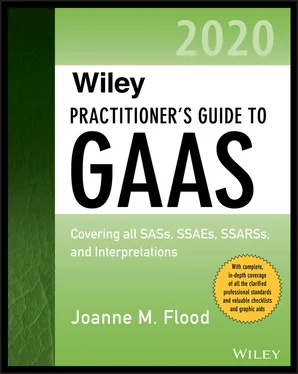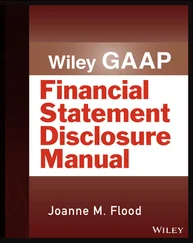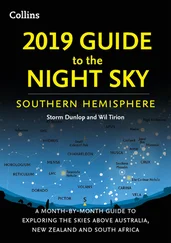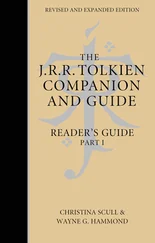Joanne M. Flood - Wiley Practitioner's Guide to GAAS 2020
Здесь есть возможность читать онлайн «Joanne M. Flood - Wiley Practitioner's Guide to GAAS 2020» — ознакомительный отрывок электронной книги совершенно бесплатно, а после прочтения отрывка купить полную версию. В некоторых случаях можно слушать аудио, скачать через торрент в формате fb2 и присутствует краткое содержание. Жанр: unrecognised, на английском языке. Описание произведения, (предисловие) а так же отзывы посетителей доступны на портале библиотеки ЛибКат.
- Название:Wiley Practitioner's Guide to GAAS 2020
- Автор:
- Жанр:
- Год:неизвестен
- ISBN:нет данных
- Рейтинг книги:3 / 5. Голосов: 1
-
Избранное:Добавить в избранное
- Отзывы:
-
Ваша оценка:
Wiley Practitioner's Guide to GAAS 2020: краткое содержание, описание и аннотация
Предлагаем к чтению аннотацию, описание, краткое содержание или предисловие (зависит от того, что написал сам автор книги «Wiley Practitioner's Guide to GAAS 2020»). Если вы не нашли необходимую информацию о книге — напишите в комментариях, мы постараемся отыскать её.
its professional standards, raising challenges for the accounting professional to stay current and in compliance. This edition will give auditors and accountants the knowledge and understanding they will need to competently perform and successfully complete their engagements. With this valuable resource, readers will have a comprehensive guide to the latest professional standards, practices, and procedures. The
provides an analysis of all SASs, SSAEs, SSARSs, and Interpretations. This one book provides all the most recent revisions to the standards, explaining them in a clear way that’s designed for greater understanding.
Whenever standards are changed, professionals need guidance on conducting engagements efficiently and effectively. This guide to GAAS and other professional standards provides helpful, systematic direction that saves auditors and accountants time and supports them in their jobs. Readers will have a comprehensive view of moving through the process of auditing, reviewing, compiling, and preparing financial statements and performing attestation services. In addition to explanations, readers will get a detailed discussion of current issues and gain the benefits of practice notes, illustrations, checklists, and questionnaires to reference. Practitioners will find:
Organization based on the way auditors use the Statements on Auditing Standards, ensuring efficiency and ease of navigation Comprehensive guidance through the auditing process Explanations of all attestation standards Updates and interpretations of Statements on Standards for Accounting and Review Services The
is a fully updated resource for completing audit, attestation, review, compilation, and preparation engagements successfully.












